#ants actually evolved from wasps
Explore tagged Tumblr posts
Text
lost in the sauce of learning the full story of the fig wasp
will almost certainly post what i'm now learning here once i recover from learning it
this fucking planet is so godsdamn weird
#like i knew figs were pollenated by wasps that laid their eggs in the figs but wtf#wasps and bees and ants are all basically the same animal in much the same way that dolphins and whales are basically the same animal#ants actually evolved from wasps#and i am 100% fascinated by the ants and wasps and bees my gods they have their little feet in everything#they ranch they farm they enslave they war they inject their eggs in spiders and their larva eat their way out#jeweled wasps inject behavior altering drugs into a very SPECIFIC PART of a cockroach brain...#gods i just started to fact check what i was about to say and got caught up in new details about jewel wasps#lost in the wasp sauce#oh no even before i could post this i've become rabbit holed over the first insects to evolve and the possibility of a single common ancest
12 notes
·
View notes
Text
Simple lifeform facts I take for granted that I've now seen blowing people's minds on here:
That sea urchins walk around and have mouths with teeth on their undersides
That corals are related to jellyfish
Barnacles being related to crabs and shrimp
Ants being an offshoot of wasps
Termites being totally unrelated to ants and all similarities just being convergent evolution (they're actually a group of cockroaches, but even science didn't know that part until a few years ago)
Starfish having an eye at the end of each arm
That the bodies of ticks and mites are also their heads, essentially big heads with legs (they even frequently have eyes way up on "the body")
Sperm whales have no upper teeth, and also their bodies are flat from the front
Goats also having no upper (front) teeth
Tapeworms having no mouth at all and just absorbing nutrients over their entire body surface
That flies are bigger pollinators than bees
That moths are bigger pollinators than bees
That wasps are just as important pollinators as bees (more important to many groups of plants) and when we say they're "less efficient" at it we just mean individually they get a little less pollen stuck to them.
That honeybees are nonnative to most of the world and not good for the local ecosystem, just good for human agriculture
That earthworms are also nonnative and destructive to more habitats than the reverse
There being no hard biological line between slugs and snails; all slugs aren't necessarily related to each other and there are gastropod groups where some have shells and some don't
That ALL octopuses (not just the blue ring) have a venomous bite
Most jellyfish and sea anemones being predators that eat fish
"Krill" being shrimp up to a few inches long and not some kind of microbe
Blue whales therefore being the deadliest predators to ever evolve as they eat up to several million individual animals per day
That krill are still "plankton" because plankton refers to whatever animals, algae and other organisms are carried around by the sea's currents, not to any particular group of life or a size category
Fungi being no more related to plants than we are, and in fact more like a sibling to the animal kingdom if anything
Venus fly traps being native to only one small area of North America in all the world
Parasites being essential to all ecosystems
Leeches not having a circular ring of teeth anywhere
That algae is not a type of plant
That most seaweed is just very big algae
That enough wood ends up in the ocean that plenty of sea life evolved to eat only wood
Speaking of which the fact that the "ship worms" that make tunnels in wood are just long noodly clams
Butterflies technically just being a small weird group of moths we gave a different name to
That insects only get wings once they reach maximum size and therefore there can never be a younger smaller bee or fly that's not a larva
Spiders not being any more likely to kill their own mates/young than just a cat or dog might, for most species maybe a lot less often?
6K notes
·
View notes
Text
deep rock galacticglyphid post
drg is my latest hyperfixation i think i love this game so mcuh ive been thinking aboutthe glyphids a lot and their biology im not super knowledgable on bio i just really like the topic so i might get a ton of stuff wrong but idc disclaimer: because glyphids evolved seperately from earthbeings (duh cuz they're on hoxxes not earth) any similarities to earth creatures is most likely just convergent evolution extraterrestrial life could be extremely similar like the glyphids or completely different its all speculative. anyway, first things first: Bone Game
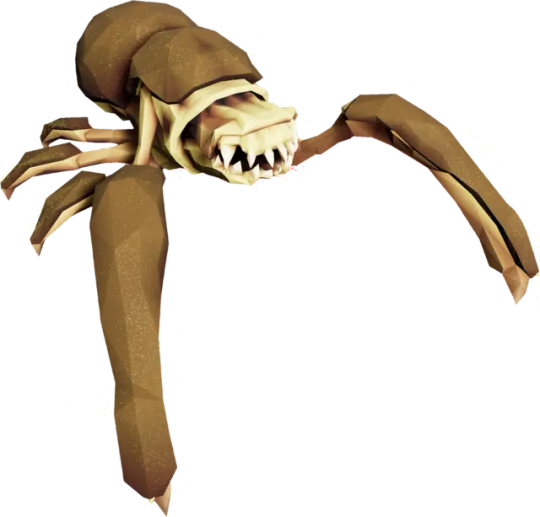
ok lets look at the glyphid grunt for a sec. Glyphids have two body segments, a head and an abdomen, and eight legs. Their front legs are usually enlarged for burrowing, attacking, and defending. These vary in size and shape depending on the bug. (most glyphid variants look like they have three body segments, such as the grunt shown above, but i believe that its just a protruding jaw as when it moves its head its entire body moves with it, and the Warden specifically has a much more obvious two-segment body plan due to its lack of sharp teeth and massive size difference in body and head) They may or may not have eyes, indicating that eyes were a trait they lost when they went underground. What separates them from spiders is their size, ability to vocalize, their eusocial hierarchy, and the fact that they probably have bones. Earth spiders are invertibrates, like all arthropods. We haven't seeen a glyphid skeleton completely before, but there is a lot of evidence pointing towards their true bony nature. They dont have typical exoskeletons that cover the entirety of the animal. They have "chitinous armor plating" as described by the bestiary that resembles more the armored back of a crocodile than an actual exoskeleton. This plating can be removed in battle and not impair the glyphid's movement, in stark contrast to an earth bug which if you removed its exoskeleton it would just be a pile of bug organs. Exoskeletons double as their skin. Also glyphid sw
armers have no armor and still are fine moving around. They also have defined teeth and jaws, unlike the mandibles on an earth arthropod.
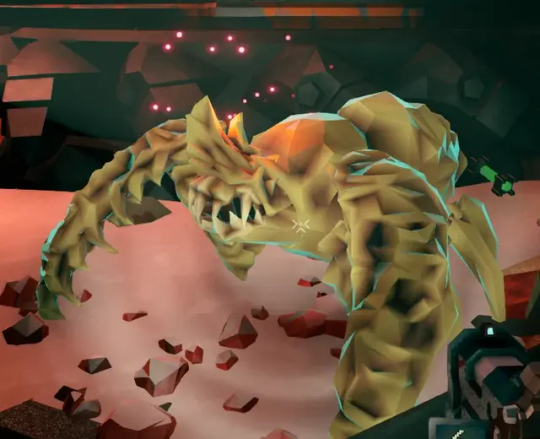
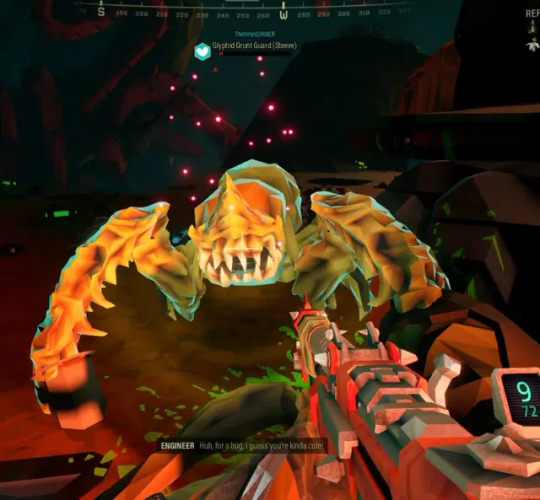
(peeled glyphid grunt guard)
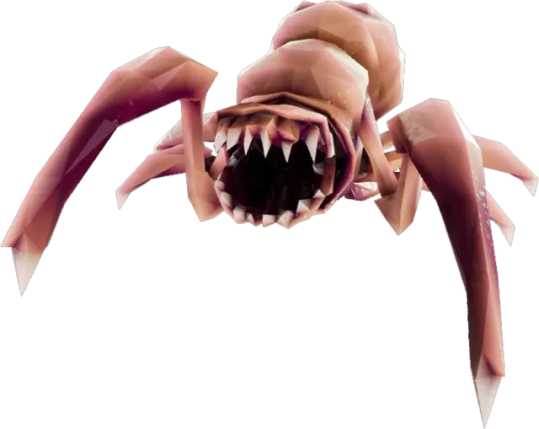
(glyphid swarmer with teeth and jaw visible) Lastly, and I'm not too sure on this one, but i dont believe an exoskeleton made of chitin could hold up a glyphid, yet alone some of the bigger ones. Praetorians are the size and weight of a midsize SUV, and they're not even the biggest glyphids get.
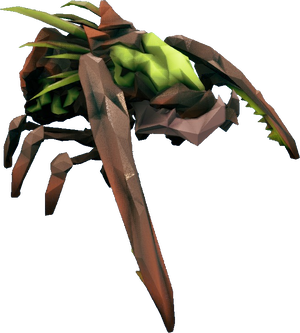

Solitary vs Eusocial
If you got this far you're autistic about animals like me and probably know what eusocial means. If you don't, it just means there's a queen and workers. Think ants, wasps, and bees. While it's generally a consensus that most glyphids are eusocial under one Queen (we'll talk about her later), I think not all of them are. The bestiary says that glyphids are a genus, not a species, meaning that different glyphids can evolve seperately from one another and can be able to live independently instead of in a caste system. Of these, I think the beasts most likely to be solitary are the Stalker, Menace, Stingtail, and Septic Spreader. These guys have extra tools and divergent behaviors (sneaking up behind you, digging around, keeping a distance to shoot projectiles) that seem, to me, like they are taking advantage of the fact you are preoccupied with the glyphid colony and trying to snatch you up as prey for themselves.
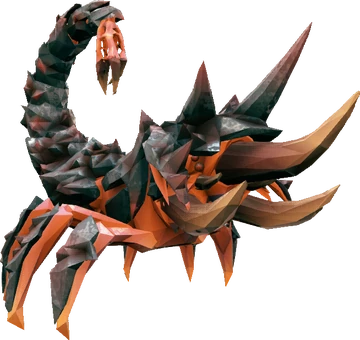


(from left to right) stingtail, septic spreader, stalker (below) menace
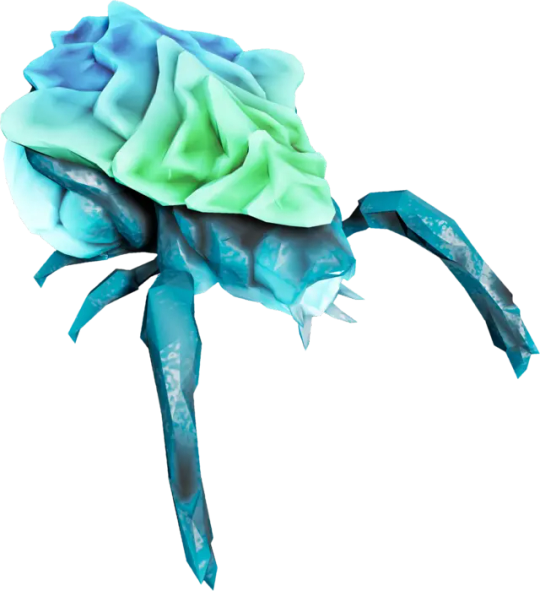
It also explains why, in some locations, there are random batches of glyphid eggs out and about. It could be this could be a clutch of one of the aformentioned solitary glyphid eggs, and all glyphids look the same when they hatch.
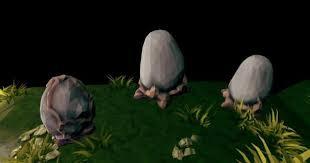
These swarmer nests could either be from the glyphid colony (we are in their territory, after all) or just a different variant of glyphid.
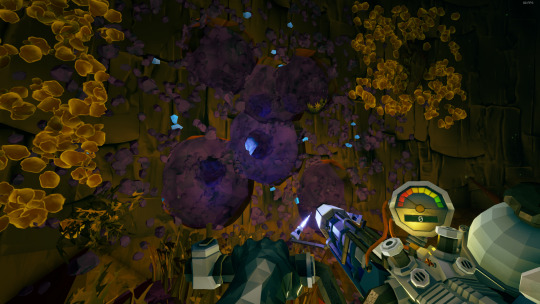
( the blue gem is not supposd to be in there usually, just the purple circles. I couldn't find a better picture.) insert super smooth segue into :
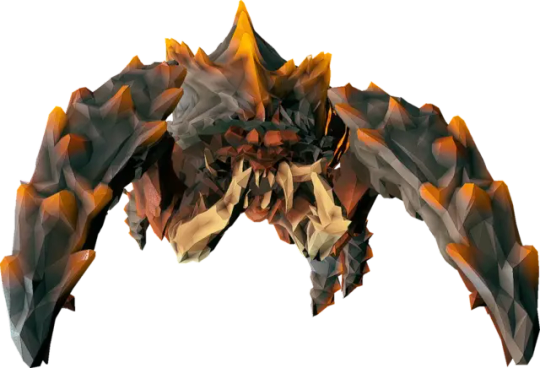
Glyphid Hierarchy

apologies for the crunchy image but i put together this tierlist to explain how I think the glyphid hierarchy works. The tierlist didn't have the stalker in it but it would have gone in solitary for reasons Ive mentioned.
Notes: Soldiers are specialized for fighting but they all have different roles. Slashers and exploders tend to flank and sneak up on their target, the latter being born literally just to die. Praetorians and oppressors are meant to soak up attention and, in our case, damage. Web and acid spitters are meant to take care of flying enemies ( probably mactera in the wild, but in our case it's dwarves on a zipline), and wardens support the ground enemies. the green baby glyphids that are in the solitary tier are called Glyphid Spawn, and they aren't actually a glyphid; rather, a fleshy monolith called a Brood Nexus (below) had taken the DNA of a Glyphid and created their own version of swarmers with it. icky.
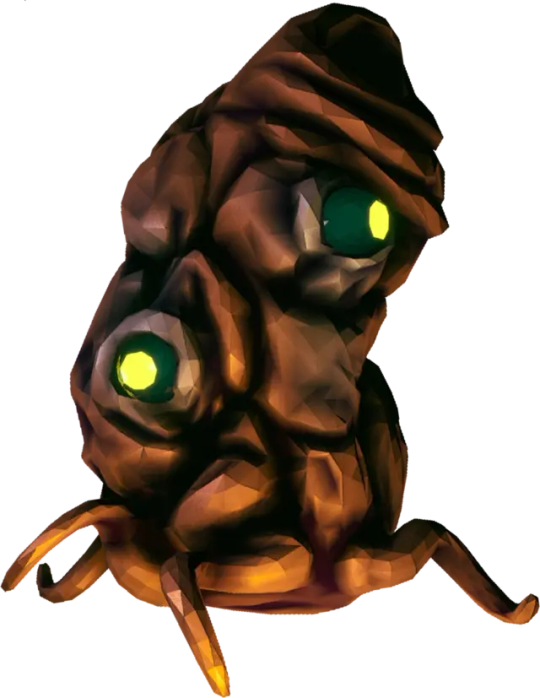
Mutations and Anomalies
Certain bugs such as the Bulk Detonator, Dreadnought Hiveguard, and dreadnought twins are anomalies that either don't occur naturally or an unintentional byproduct of biology doin its thing. The Bulk detonator "is what happens when an exploder manages to not detonate during its volatile, and usually short, life." This description pretty much spells it out that these guys aren't supposed to exist.
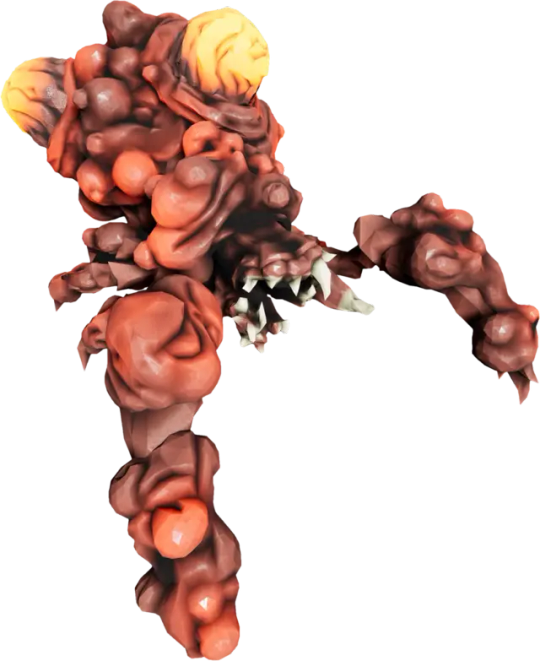
also, look at their mangled faces and bulbous, pustuled bodies. Exploders are meant to be sent out and explode. I don't know what the glyphid colony does with these, but I don't think they let them stay. Too volatile, and positively humongous. They're the biggest glyphids by far and i think glyphids just wouldn't let them be.

I have no clue how the Crassus Detonator exists or how it turns an entire crater into gold when it explodes. The Dreadnought Twins are a Dreadnought that split into two in the cocoon. Assuming dreadnoughts pupate into queens (more about that below), it's likely that they would pupate into two queens, with possible ramifications outside of that (perhaps sharing energy in a cocoon means inhibited reproduction in some way?) I doubt they'd fight over power, because the dreadnought twins show impeccable teamwork when broken out, even to the point of one dreadnought will sacrafice some of it's health for the other if one gets too low.

dreadnought twins The Dreadnought Hiveguard is the closest we've got to actually seeing a Glyphid Queen. It's a dreadnought that's been baking for a while but hasn't gotten all the way there. It's impenetrable from everywhere and can spawn Sentinels to protect it. It then reveals three weakpoints on its face when all Sentinels are killed, and then reveals its booty weakpoint when the face weakpoints were deaded.
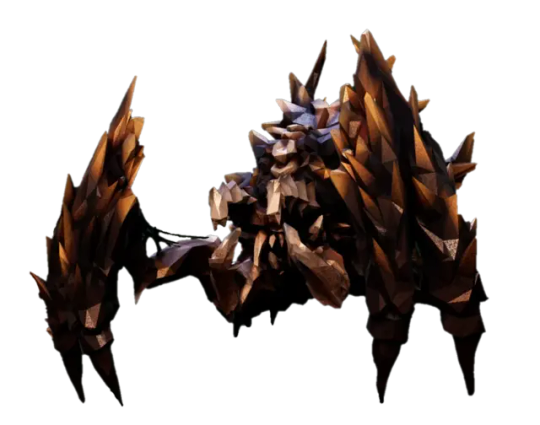

(from left to right) Hiveguard, Sentinels Because Sentinels don't come from the cocoon and dont spawn in any other area, my best guess about them is they lay dormant usually, letting the other glyphids fight. They only respond to the Queen, being her last line of defense. It'd make sense because the Hiveguard is the closest thing to a queen we've got, and it has a unique vocalization for summoning Sentinels.
Dreadnoughts, Praetorians, Queens, and Conservation
The glyphid dreadnought, at its base form, seems to be a grander Praetorian. They look similar, down to the tusks on their face, and even have similar attacks. They carry the same bite and slash that nearly all ground glyphids have, but they also have a projectile shot from the mouth.
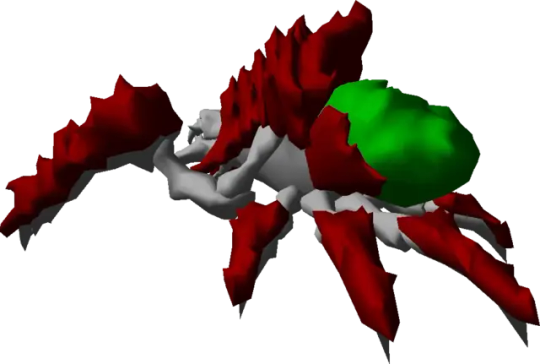

(from left to right) Praetorian 3d Model, Dreadnought 3d Model If I had to guess, this could be a Royal Jelly Moment. To explain, lets look at earth honeybees. These guys are fed a substance called "royal jelly" as a larva until they are fed honey. Certain workers, though, are fed and fed and fed and even have the walls of their honeycomb cell lined with the stuff. These workers end up becoming juvenile queen bees and they start their own colony. Given the fact that Oppressors are canonically "aggresively mutated Praetorians", I believe they are simply praetorians that weren't fed Royal Jelly. Their armor grows, and their weakpoint abdomen shrinks.
In the game, it's heavily implied that the glyphids are without a Queen (the voiceline "Die like your mother did!" when killing glyphids comes to mind), and the only time we ever see a Dreadnought is in a cocoon, outside of the rare times it spawns on an unrelated mission. We are told explicitly that these guys arent in their final form and they will pupate into something much worse if we don't stop them, and there seem to be a lot of cocoons around. (There are 2-3 cocoons a mission and there is always an elimination mission available.) What i think is happening is Praetorians are mutating into Dreadnoughts which are further trying to mutate into Glyphid Queens to fill the empty spot in the glyphid hierarchy and they want to spew out so many glyphids that the mining operations on Hoxxes has to close down. This has a lot of implications. Firstly, glyphids are so plentiful without a queen. Imagine how insane they'll get with one. Secondly, glyphids are numbered. They aren't being replaced and DRG is killing hundreds of them a mission, potentially thousands on Deep Dives and Elite Deep Dives. (I tried an elite deep dive earlier today, got to about 897 dead glyphids on the third mission which i inevitably failed). Thinking about this really puts into perspective the damage DRG is doing to Hoxxes in the pursuit of more money and resources, polluting it with depleted uranium and plasma radiation and drill fumes and omoran heartstone lazerbeam juice and abandoned mining equipment, sucking it dry for its resources, and actively killing the rest of the wildlife that havent died from habitat loss. Glyphids are not the villain of this story. They are just following their instincts. It reflects how real-world corporations simply don't care about the earth that gives it its wealth and gives us life. I didn't mean for this rant to end the way it has, but please be grateful for the earth you stand on, appreciate nature, and don't litter. Also, if you haven't, play Deep Rock Galactic. solid game.
if only there was some salute or chant i could say to end this with a bang, one involving rocks, or stones, or something
#drg#deep rock galactic#glyphid#theory#biology#spec bio#special interest#loser#karl#deep rock#autistic
50 notes
·
View notes
Note
Why do wasps have such tiny waists? I read some can't even digest solid food and have to be fed by the babies like a reverse bird
a bit of taxonomy, first: order Hymenoptera contains what we call in English sawflies, wasps, bees, and ants. wasps evolved from the waistless sawflies, specifically a parasitic group of sawflies (so phylogenetically, an ant/bee is a wasp that is a sawfly).

the wasp waist, or petiole, likely evolved to give a parasitic wasp’s abdomen more mobility so she could jab her ovipositor into a suitable host. this means parasitism is ancestral to all wasps, and was actually lost in groups like the vespids (social wasps/hornets), Anthophila (bees), and formicids (ants). the wasp waist stuck around though, and so did the liquid diet! of course, plenty of adult apocritans can make use of solid foods like ants, or by getting nutrients from their larvae like paper wasps. but of the Hymenoptera, I believe the sawflies are still the only ones to chew solid food like other insects (plenty of predatory adult sawflies!)
250 notes
·
View notes
Text
WASP REVIEW - WAR WASPS (METROID PRIME)


[Image IDs: Two pieces of official artwork for the War Wasps from Metroid Prime, the first from the remaster while the second is from the original game /End IDs.]
This is actually the first wasp I'm covering from a game I haven't played, although I do plan on getting around to it, so forgive me if I misinterpret! With that out of the way, my first impression of these alien wasps is that, visually, in terms of shape, especially with their stinger sticking out in the way it does, they most resemble ichneumons, with the remaster version especially looking like Megarhyssa greenei!

[Image Source: bugguide.net | Image ID: A photo of greene's giant ichneumonid wasp, a large brown, yellow, and black ichneumon wasp with translucent wings and an exceptionally long ovipositor /End IDs.]
Except for a few details of this wasp's silhouette that are clear in both the remaster art and models in a good chunk of the games from what I can see, that being the almost beetle elytra-like protrusions above the translucent wings on the thorax, the spines on the abdomen and thorax, the lack of a third pair of legs, and, perhaps most obviously, the bird-like eye shape and beak they have for a mouth.
Although the last point is notably different in the art of the original game as well as the species shown in Metroid Prime 2: Echoes, which has no legs as well as a rounder head with 9 eyes, in three groups, each almost resembling how the ocelli are assembled on the top of a real world wasp's head.

[Image ID A screenshot of the War Wasp from Metroid Prime 2: Echoes /End IDs.]
Although, the resemblance to ichneumons seems to be entirely visual, as ichneumons are solitary, and these guys are eusocial! They build hives and mainly attack in defense of the hive, this hive being built over existing crevices and made of whatever material they can get their hands on, gluing pieces into place with "adhesives secreted from their abdomens", a process which is seemingly similar to how a honey bee (actually technically, taxonomically another eusocial wasp itself, bees having evolved from other wasps as a sister lineage of Ammoplanidae) would produce wax from its abdomen, similarly sharing the aspect of "royal jelly" production with bees.

[Image ID: A 3D render of the hive of a War Wasp colony from Metroid Prime 2: Echoes /End ID.]
In fact, they're possibly even more than eusocial, as the logbook entry for the green and red variant found in the Hive Totem of Tallon IV, Ram War Wasps, states: "The War Wasps are the only species on Tallon IV to evolve a true hive mind", as well as "Striking from all sides as a single intelligence, they can fell huge organisms". Although it is unclear whether the consciousness of the War Wasps being a hive mind is true for all species or just the Ram War Wasps, as both regular War Wasps (Prime 1 and Echoes both being different) and Barbed War Wasps display notably different behavior.
On the topic of said behavior, however, on top of the ramming behavior of the Ram War Wasps, the standard War Wasps in the original Metroid Prime seem similar to notable stinging eusocial species of wasps, namely Vespids, in that, upon spotting a threat to the hive, they divebomb and attempt to directly sting the threat. Although they're a bit more territorial than even eusocial Vespids, as, in the real world, you would be able to get fairly close to their nest without being attacked if you know what you're doing (See a previous ask I received for more information about my experience with this), while War Wasps attack from much, much further away!
Meanwhile, the standard War Wasps in Echoes and the Barbed War Wasps in Prime 1 actually fire projectiles, a feature found in very few wasps, namely ants like some Formica wood ants and yellow crazy ants (Ants having evolved from wasps in a similar way as bees, taxonomically being wasps). Although whereas these ants spray acid, the projectile firing War Wasps fire beams of pure energy (Standard, Echoes) or their stingers (Barbed, Prime 1).
The logbook entry for Barbed War Wasps states: "This insect can propel the tip of its stinger up to 20 meters. The stinger tips regrow seconds after launch and contain an acidic compound designed to predigest prey". Obviously, while shockingly efficient and fascinating as many things real wasps do possess, this isn't something found in real world wasps. Even the aspect of predigestion is something more akin to assassin bugs, who inject venom via their "beaks" to predigest the prey that they hunt.
In conclusion, however, being aliens, I can't exactly rank them on their merit of being "accurate to real wasps", instead, it's best I score them just based on how neat I find them! and honestly, I find the War Wasps to be very interesting, it's clear the writers of Metroid put quite a bit of thought into how they behave, and they just have cool designs!
-
Overall: 8/10
-
This wasp was suggested by @coleopterabyte , leave your wasp review suggestion in the replies, tags, or askbox!
30 notes
·
View notes
Text
Wasp fun facts!
Most commonly known wasps are ‘social wasps’ of the family Vespidae, which is a eusocial group that lives together in a hive. Like bees!
Like bees, ants, and other members of the Hymenoptera order, these ‘social wasps’ are haplodiploids, which means that their sex is determined by whether or not the egg they hatched from was fertilized. (this means that males have half the chromosomes that females do. cool!)
HOWEVER: A lot of wasp species are actually solitary, and each adult female will live her own live and do her own thing.
In most species, these females will have an ‘ovipositor’, which does exactly what it sounds like: it deposits eggs. It’s basically dick for wasp girls, except it isn’t, actually, it just looks like one.
In the subclade Aculeata, this ‘ovipositor’ (LOVE that name btw) also serves as the insect’s stinger.Some species’ Ovipositors will partially retract while not in use. I find that cool and silly.
For some parasitic species, the ovipositor is actually a piercing organ, not just a plain old egg layer. NOT IN A SEX WAY. In a ‘laying my eggs inside another insect so when they hatch they can consume it from the inside out’ way.
Moving on from wasp dicks...
Our oldest fossil records of wasps date back to the jurassic period. That’s about 145 MILLION YEARS AGO. these things are old.
Also, ‘Wasp’ is not a distinct clade (all of the descendants of one common ancestor). This is because Bees and Ants actually evolved from the same ancestor as wasps did, and that makes it impossible to make a clade that contains every wasp and no bees or ants.
There are more than a hundred thousand known species of wasp globally.
--- --- ---
I think that’s enough wasp facts for one post! I’ll follow this post up with some more facts about wasps. Either specific species, or something else, we’ll get there when we get there.
(Ps: most of this info is literally just the Wikipedia page for wasps, summarized in my own incredibly informal and possibly misleading words. If something I said sounds weird in any way, I advise you check for yourself. Also please be aware that I’m the only one calling them wasp dicks, that’s not a scientifically correct term.)
#my posts#fun fact#fun facts#wasps#insects#bugs#bug facts#insect facts#entomology#<-- the amateur version of it at least
12 notes
·
View notes
Text
It's so fucking funny and infuriating when people claim wasps are useless and serve no purpose like they legitimately believe that wasps spent the entire history of the universe evolving for the sole purpose of annoying them. It is so clear these people have never interacted with native plants.
Sarcasm: spongebob narrator voice: Ah yes. Ze wasp (of which there is definitely only one species called Evil Stinging Bastard). So useless. Does nothing except plot all day and night to scare people by existing. So evil. So useless. Definitely does not play any ecological role. End sarcasm.
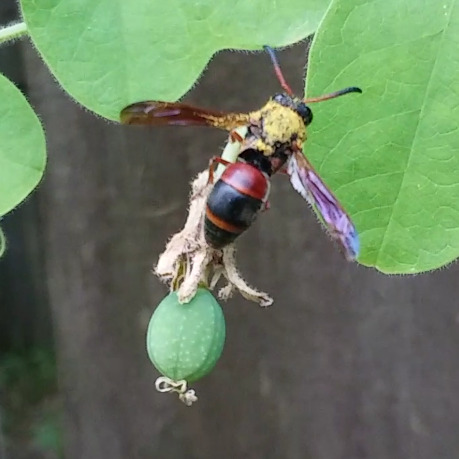
Image description start period a square cropped photo of a black and red Mason wasp perched on an immature yellow passionflower fruit. It is a small wasp with a black body with thick red stripes, and purple and red iridescent wings timer with red antenna fading to black period on the wasps Thorax and wing joints and somr of its head is bright yellow pollen stuck to it. Image description end.]
These little cute red and black Mason wasps are probably the only reason we have any fruit on this yellow passionflower vine. Every time I see the flowers being pollinated it is a black and red mason wasp doing the pollinating.
This one here is a male, not that you can tell in this picture, but the males have weight spots on their faces which I just think is cute.
When I actually get around to uploading the video this is from YouTube I will edit this post and link it here. It's July 19th 2023, so if you're Reading this person like August 2023 refresh the original post and get the link because I should have uploaded it to YouTube by then. And then you'll get to see the carpenter bee pollinating the purple passion flower right next to this plant and also a cool spider and the winger ants (??) It caught and also baby...wheelbugs? I think they're wheelbugs... There's some kind of bug with a capital B. They as adults will stick their proposes into the ripe yellow passion flower and suck out all the juice like it's a juice box. Which I know because I saw one do it last year. And then we get to collect the seeds of the passionfruit lol.
This year though we will be putting some of the fruit in organza bags so that we can actually see what it tastes like.
Update: well. It's November 11th now, lol, here's the video link finally.
#made with speech to text#described images#bugs#insects#bees#wasps#bug photos#insect photos#bee photos#wasp photos#red and black mason wasp#Rjalker takes pictures
9 notes
·
View notes
Text
MARSH MARIGOLD, JULY
During todays dog walk I spotted a small bush of yellow flowers I couldn’t identify by eye, seen below:

After using the Seek app and Wild Flower Guide, I confirmed it was a marsh marigold (Caltha palustris), so named because it has evolved to grows in places with oxygen-rich water near the surface of the soil such as marshes, ponds, damp meadows, ditches, and wet woodlands. However, unlike its name it is not in fact related to (or look like) the marigolds, but is actually in the buttercup family. The common marsh marigold is planted as an ornamental in my parts of the world, and is considered a low-maintenance flower for wildlife gardens. It is also an edible plant (when cooked properly), with the spring greens, buds and leaves bring used by boiling, cut, salted and seared with melted butter and vinegar. The young flowerbeds can also be prepared as a spice.
As marsh marigolds are one of the earliest flowers to bloom in the springtime, they attract a lot of pollen- and nectar-eating insects like bees and flies. The mature seeds are also enjoyed by several bird and rodent species, and they provide pond-side shelter for frogs! In western Europe a moth called unsurprisingly the marsh-marigold moth bites the anthers open to eat the pollen, while their caterpillars also feed on the flower in the summer and autumn. Not all animals enjoy them though, and they are used as squirrel-repelling flowers in vegetable gardens, due to their strong aroma.

Mash marigolds rely on pollinators as they are infertile when self-pollinated. Therefore, they product copious amounts of both nectar and pollen to attract visitor. In Canada they are pollinated by several species of beetle, thrip, bug, butterfly, sawfly, bee, fly and ant. As well as all thse, the plant is also adapted to rain-pollination. Here in the UK they are pollinated by bees, butterflies and flys. In fact I caught one particular species in the act:
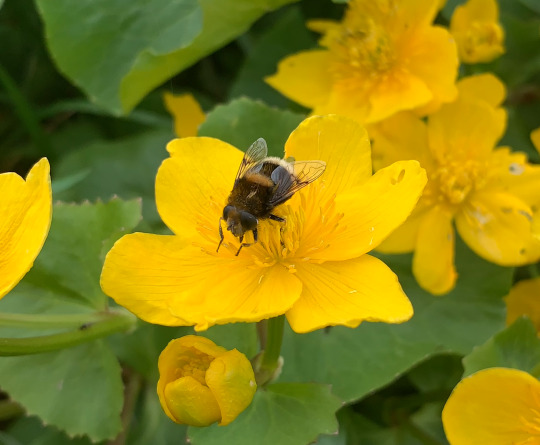
Pictures above is a female of a European species of hoverfly (Eristalis intricaria) which mimics the furry bee in colour and shape. This is known as Batesian mimicry, which is when members of a palatable species gain protection from predation by resembling or mimicking the defensive signalling of an unpalatable, defended species. Thus, they mimic bees and wasps, two insects that can sting as well as tasting unpleasant to predators. These guys, like the marsh marigold, favour marshlands and woodlands, where they can hover over flowers (hence their name) and feed on the nectar and pollen. As well as pollinating they are also considered an important economical and ecological predator even in their larval stage by eating aphids and leaf-hoppers, both major crop-pests that spread diseases such as curly top. So, next time you see a overfly buzzing around, don’t swat it, praise it!
4 notes
·
View notes
Text
2023 Reading Log, pt 5
Is it obvious that my local library has lots of books about birds?
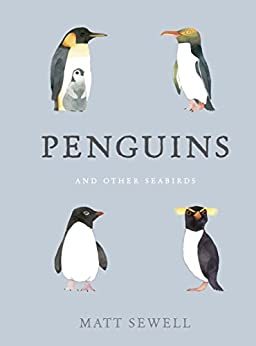
21. Penguins and Other Seabirds by Matt Sewell. This is a small book, hardcover, with color paintings of fifty seabirds and short informational blurbs about each. The blurbs are a combination of science and poetic writing, and are often anthropomorphic and occasionally judgmental (it’s okay gulls. I don’t hate you). The book is cute, but very short and faintly disposable. It feels like a gift book you get someone who you don’t know very well, but you do know likes penguins. Suitable for a bird-themed bathroom reader.

22. The Complete Language of Food by S. Theresa Dietz. This book baffles me; it feels like it was written by a space alien, or possibly a Dan Brown character. The “language” the title refers to is both symbolic and magical, and each of the foods is granted a laundry list of things it could possibly represent in a reference or a spell. These lists are sometimes nonsensical (or am I the asshole because I don’t know what “colorize” means in the context of magic?). Each entry is marked with symbols to tell if the plant has poisonous parts, or medicinal use, but said toxins and/or medicines may or may not be referred to in the actual text! The main text itself combines world cultural lore, magic and folklore, and recipe ideas in a seemingly random assortment. The book at least looks nice—good paper quality and color illustrations—and it actually has a bibliography. So it’s getting at least some of these ideas from somewhere. I am really confused as to the target audience, and what they’d hope to get out of it. I don’t think this book is for me. Although there’s at least two other entries in the series, so there is an audience out there.
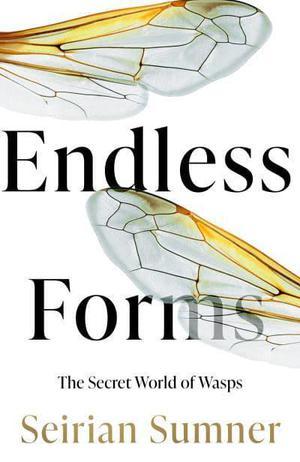
23. Endless Forms: The Secret World of Wasps by Seiran Summer. This book aims to give wasps a reputation boost from “the insects that are assholes” (thanks to @screamscenepodcast for that excellent summary of the popular culture view of wasps) to the vital part they play in ecology, our understanding of evolution, and the services they provide to humans. The book talks about the evolution of the Hymenoptera, and how both bees and ants are really just subdivisions of wasps that evolved in specialized directions. It covers some of the great naturalist observers of the 19th and early 20th centuries, like Fabre, and discusses what they got right, what they got wrong, and what we still don’t know. And in a very amusing change of pace, it frames the comparisons and contrasts between social wasps and honey bees as a drunken dinner conversation with a resurrected Aristotle. It even brings up The Wasp Woman! If you can’t tell, I really liked this book.

24. Over My Dead Body by Greg Melville. This is a history of the United States as seen through its cemeteries. The author is a big fan of graveyards, and each of the chapters is bookended with his personal experience of a visit, then talking about the history of the place and how it ties into greater themes in American history. Themes like colonialism, racism and segregation, the military industrial complex and the death industrial complex. The author blurb makes sure to point out that Melville is a “decorated veteran”, but any worries that this book was going to be jingoistic are dispelled basically immediately. He refers to Arlington National Cemetery, for example, as a beautiful, profoundly sad monument to the American god of death. I got this from the library, but I’m buying a copy for my mom for Mother’s Day. Because she likes cemeteries, not as some sort of weird threat.
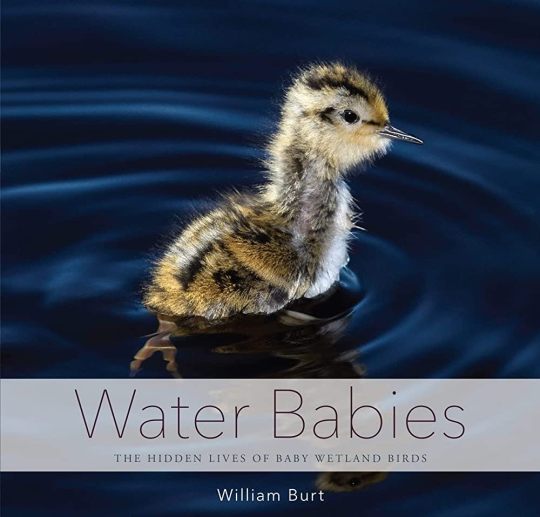
25. Water Babies: The Hidden Lives of Baby Wetland Birds by William Burt. This is a photography book covering a hard-to-photograph subject. Baby water birds, including ducks, herons, terns, sandpipers and coots. The book is sorted roughly by taxonomic group, with pictures of each the juveniles and adult of each species, along with some commentary about the animal or the process of finding and photographing it. The book has a great sense of pacing—it’s arranged in a way that immediately hooks the reader (with grebe chicks, which are super cute and ride on their parents’ backs), and photos are arranged in space to allow for artistically pleasing contrasts (like turning the page from the scruffy chick of the purple gallinule to see the magnificent adult plumage).
#reading log#what are birds#birds#funeral industry#american history#wasps#entomology#magic#food history#plants
4 notes
·
View notes
Text
Marvel’s Thunderbolts: A Deep Dive into the Antihero Ensemble

The Marvel Cinematic Universe (MCU) is renowned for its compelling heroes, intricate villains, and thrilling narratives that capture audiences worldwide. Among its expansive roster of characters, one group stands out for its moral ambiguity, complex dynamics, and fascinating backstories: the Thunderbolts. With a mix of antiheroes, former villains, and those seeking redemption, the Thunderbolts promise a captivating addition to Marvel’s cinematic tapestry. But who are they, and what makes them so compelling? Let’s delve into the origins, evolution, and potential future of this enigmatic team.
The Origins of the Thunderbolts
The Thunderbolts were first introduced in 1997 in The Incredible Hulk #449, created by writer Kurt Busiek and artist Mark Bagley. At first glance, the team appeared to be a new group of superheroes ready to fill the void left by the Avengers. However, the shocking twist revealed that the Thunderbolts were actually the Masters of Evil in disguise, led by the cunning Baron Zemo. This twist was a masterstroke, flipping the traditional superhero narrative and captivating readers with its audacious storytelling.
Zemo’s initial plan was to gain public trust and use it for his nefarious purposes. However, as the series progressed, many team members found themselves drawn to genuine heroism, leading to a fascinating exploration of redemption and morality. This duality has remained a cornerstone of the Thunderbolts’ identity, setting them apart from other Marvel teams.
Core Members of the Thunderbolts
Over the years, the Thunderbolts’ roster has included a diverse array of characters, each bringing unique skills, personalities, and moral dilemmas. Here are some of the most notable members:
Baron Zemo (Helmut Zemo)
The original leader of the Thunderbolts, Zemo is a master strategist and manipulator. His transition from villain to antihero is a key aspect of the team’s early stories, showcasing his inner conflict and occasional flashes of genuine leadership.
Songbird (Melissa Gold)
Once a villain known as Screaming Mimi, Melissa Gold’s journey to becoming a bona fide hero is one of the Thunderbolts’ most inspiring arcs. Her sonic powers and determination to make amends for her past mistakes make her a standout character.
Citizen V
A heroic alter ego adopted by Zemo in the Thunderbolts’ initial deception, Citizen V represents the team’s blurred lines between heroism and villainy. Later iterations of the team saw other characters take up the mantle, further complicating its legacy.
Ghost
A tech-savvy infiltrator and saboteur, Ghost’s inclusion in the Thunderbolts adds an element of unpredictability. Known for their appearances in Ant-Man and the Wasp, Ghost’s motivations often straddle the line between personal vendettas and broader goals.
Red Hulk (General Thunderbolt Ross)
As the Red Hulk, General Ross brings raw power and a military mindset to the team. His inclusion highlights the Thunderbolts’ potential as a force capable of tackling the most dangerous threats.
Yelena Belova (Black Widow)
Yelena’s involvement in the upcoming MCU adaptation of the Thunderbolts signals a shift toward incorporating fan-favorite characters from recent films. Her background as a spy and her complex relationship with Natasha Romanoff promise rich storytelling opportunities.
The Thunderbolts’ Evolution in Comics
Since their debut, the Thunderbolts have undergone numerous transformations, reflecting the shifting tides of Marvel’s storytelling. Initially a covert group with questionable intentions, they evolved into a team genuinely striving for redemption. Later iterations, such as those led by Norman Osborn during his Dark Reign, leaned heavily into the darker, morally ambiguous aspects of the team’s identity.
The Thunderbolts have also served as a proving ground for lesser-known characters, offering them a chance to shine in the Marvel Universe. This tradition of spotlighting underappreciated characters has endeared the team to fans, who appreciate the mix of familiar faces and fresh perspectives.
Thunderbolts in the Marvel Cinematic Universe
The Thunderbolts are set to make their MCU debut in an upcoming film, generating immense excitement among fans. Announced during the 2022 San Diego Comic-Con, the movie promises to assemble a roster of beloved characters, including Yelena Belova, Bucky Barnes (Winter Soldier), and John Walker (U.S. Agent).
The MCU adaptation will likely retain the team’s core themes of redemption and moral complexity while tailoring the narrative to fit the broader cinematic storyline. With Marvel’s track record of blending action, humor, and emotional depth, the Thunderbolts’ introduction is poised to be a major highlight in the MCU’s next phase.
Themes and Appeal of the Thunderbolts
What makes the Thunderbolts so compelling is their exploration of themes often sidelined in traditional superhero stories. The team delves into:
Redemption
Many Thunderbolts members are former villains or morally ambiguous characters seeking a second chance. Their struggles to atone for their past actions resonate with readers and viewers alike, offering a nuanced perspective on heroism.
Moral Ambiguity
Unlike the Avengers or the X-Men, the Thunderbolts operate in a gray area, where the lines between right and wrong are often blurred. This moral complexity adds depth to their stories and sets them apart from other Marvel teams.
Team Dynamics
The Thunderbolts’ roster is often a volatile mix of personalities, leading to internal conflicts and unexpected alliances. This dynamic keeps the narrative fresh and engaging, as characters are forced to confront their differences while working toward a common goal.
Speculations and Future Directions
With the Thunderbolts’ impending MCU debut, fans are speculating about the team’s composition, storyline, and connections to the broader Marvel Universe. Will the film explore their covert operations and antiheroic exploits? Could it set the stage for a larger narrative involving characters like Deadpool or the Dark Avengers?
The inclusion of characters like Valentina Allegra de Fontaine hints at a possible government-sanctioned angle, where the Thunderbolts operate as a black-ops team. This setup could create fascinating conflicts with more traditional heroes like the Avengers.
Conclusion
The Thunderbolts represent one of Marvel’s most intriguing and versatile teams, offering a unique blend of redemption, moral complexity, and high-stakes action. Their journey from villains to antiheroes to potential saviors encapsulates the rich storytelling potential of the Marvel Universe.
As the MCU continues to expand, the Thunderbolts are poised to bring fresh energy and darker, more layered narratives to the screen. Whether you’re a longtime fan of the comics or a newcomer excited for their cinematic debut, the Thunderbolts promise a thrilling ride that challenges our perceptions of what it means to be a hero.
1 note
·
View note
Text
Regional specific pokemon (types and order not yet decided, can change on a whim)
huge list under cut. Just a list, no names either, just mainly ideas for me to reference later
Main Dex: Gulrimi? Sorigul? I'm thinking Sorigul as the Tauraro rename. Anyway, the region is the Gulf Coast of the USA, ranging from MS, Louisiana, a small portion of Texas, Alabama, and Florida. The dex is meant to be representative of the culture of my area while taking into account personal favorites AND other animals commonly found here. A LOT are found in my own yard, actually. The main outliers are the starters, which are to be a bit weird as they are both aliens from outer space and aliens from the region itself. The map itself would be based on the gulf coast tastes but upside down and with various exagerations, reimaginings, or redesigns, and you'd be able to go to a gym of each and every type- only requiring 2 mandatory gyms to beat (your first being Normal and your last being mixed). Story is a mixture of a gym challenge, stopping the evil team, aliens, temples, and other mysteries. You and your best friend are ordinary kids about to graduate from school, and you both promised each other years ago that one of you would become the champion to put your home town on the map. What should have been a fun adventure through several sub regions turns into a series of conspiracies as you work to uncover a plot from an evil team seeking to retake the region after failing to establish their regime years ago and after their "champion" lost, aliens invading, the re-emergence of long lost temples and ruins, portals opening to strange places, and drama, drama, drama. From farm kid to the hope of the world, can you save the home and friends you love dearly?
Names and types not decided yet, but the ideas are here.
Grass
Grass steel
Grass steel- probably rhinoceros beetle
Fire
Fire
Fire fairy- either a flaming bat or a leopard frog with a cheetah's body plan
Water
Water
Water dragon- either a blue sea dragon and sea bunny combo or some sort of crab. Unsure yet
Wasp baby
Wasp nest
Red wasp
Dirt dobber wasp
Yellow jacket wasp
Bird
Bird
Bird
Chihuahua (3 variants)
Raccoon
Raccoon 2
Psychic cat ringtail
Psychic cat 2
Psychic cat 3
Cotton mouth
Cotton mouth 2
Cotton mouth 3
Possum (plus schooling form)
Box turtle
Box turtle
Box turtle
Pup
Ice pup
Electric pup
Fighting pup
Shrimp
Crayfish
Lobster
Dragon baby
Steel dragon
Fighting dragon
Ghost dragon
Lab puppy
Water lab
Goldie puppy
Fire golden retriever
Crane bird
Teacup pig
Pink Pig
Fairy flying domesticated pig
Mud pig
Wild boar
Deer
Deer 2
Deer 3
Catfish
Tiger shark
Brahma bull 1
Bull 2
Mule
Chick in an egg
Chicken fire flying
Chicken fighting flying
Chicken dark flying
Beagle
Fire ant 1
Fire ant 2
Spider lily 1
Spider lily 2
Fire rock fossil 1
Fossil 2
Triceratops fossil 1
2
Sky whale fossil
Fire dragon 1
Fire dragon 2
Fire dragon 3
Wood waifu 1
2
3
Rv tortoise
Garden snake
Field mouse
Field rat
Chipmunk
Bulldog 1 mascot
2
Eagle 1 mecha mascot
2
Black bear 1 mascot
Black bear 2
Tiger 1 mecha mascot
2
Elephant 1 mecha mascot
2
Wolf mecha 1 mascot
2
Gator 1 mascot
Gator 2
Dolphin 1 mascot
Orca 2
Bobcat 1
Cougar 2a mascot
Panther 2b mascot
Blue gaucus 1 or crab guy 1
2
3
Moth
Moth 2
Fire fly
Fire fly 2
Frog
Bull frog 2
Cow ant 1
Cow ant 2
Horse fly 1
Horse fly 2
Wolf spider 1
Wolf spider 2
Wolf spider 3
Bees and swarming form
Worm
Worm 2
Alaskam bull worm 3
Porcupine 1
Porc2
Duckling 1
Duck 2 a flying water
Duck 2 b dark water
Rattle snake
Hamster
Atv 3 wheel
Atv 4 wheel bull
Sax monster
Drum monster
Fox fighter 1 evolves via armor section
Mail carrier bug
Forest Dino 1
2
3 with mushrooms
Mosquito 1
2
3
Drill 1
2
3
Pika clone
Rabbit
Jackelope 2
Flying jackelope 3
Armadillo 1
2
Rocket bird
Electric steel cyber guy
2
3
Alien monster pseudo legendary 1
2
3
Ghost dark pseudo legendary 1
2
3
Rougarou of the bayou
Big foot
River mermaid
Drakameha
Calistaris
Titanigon
Dragon mom
Regional Variants, convergents, and cross Gen evos
Rookidee
Corvisquire
Corvilich rock flying
Growlithe water
Arcanine water ice
Phanby fire ground
Donphan
Monster truck elephant
Hoothoot ice flying
Noctowl ice psychic
Mudbray
Mudsdale grass dark
Ponyta fairy flying
Rapidash
Regional eevee
Ghost
Poison
Steel
Dragon
Bug
Normal
Pichu
Pikachu
Raichu dark
Fossil lapras convergent 1
2
Ground steel chikorita
Bayleef
Meganium
Electric psychic cyndaquil
Quilava
Typhlosion
Fighting ice totodile
Croconaw
Feraligatr
Fire ground bulbasaur
Ivysaur
Venusaur
Water poison charmander
Charmeleon
Charizard (Geyzard)
Grass squirtle 1
Wartortle
Fairy blastoise
Rock treeko
Grovyle
Rock ice sceptile stego
Poison torchic
Combusken
Poison flying blaziken
Ghost mudkip
Marshtomp
Swampert
Dragon snivy
Dragon flying Servine
Serperior
Ice ghost tepig
Pignite
Emboar
Fighting oshawott
Fighting steel Dewott
Samurott
Rowlet
Dartrix
Decidueye
Shared Heracross and Pinsir pre evo
Heracross
Pinsir (armor evo shared)
Dratini
Dragonair
Dragon/Fairy Dragonite
Yanma bug flying
Yanmega bug steel
Meowth rock
Persian rock cougar
Evo rock
Scyther bug dragon
Incyzor bug rock
Lazor bug electric
Magikarp ghost
Gyarados ghost/rock
Cyclizar pre evo
Cyclizar
Cyclizar MODERN motorcycle evo, Dragon/Steel, black harley
Varoom
Revavroom
Tractor Revavroom evo
Whimpod fire/bug
Golisopod fire/bug
dark fighting Mankey
primeape
regional fighting ralts
kirlia
regional female exclusive fighting steel evo
Tauros, Miltank, and Bouffalant preevo
Tauros
Miltank
Bouffalant
Ghost Steel Riolu
Lucario
Fire Electric Zorua
Zoroark
Sunkern
Sunflora
Sunflora evolution Grass/Fire
Salandit ice/electric
Male Salandit exclusive evo
Fairy Flying Zubat
Golbat
Globat cross regional evo
Returning non special Pokemon- as in non armor evolving, non regional variant, and non cross gen evolving of any kind in the main story.
Deerling
Sawsbuck
Spoink
Grumpig
Swinub
Piloswine
Mamoswine
Pidgey
Pidgeotto
Pidgeot
Orthworm
LeChonk
Oinkologne
Aron
Lairon
Aggron
Shroomish
Breloom
Paras
Parasect
Foongus
Amoongus
Morelull
Shiinotic
Blipbug
Dottler
Orbeetle
Ledyba
Ledian
Poliwag
Poliwhirl
Poliwrath
Politoed
Tympole
Palpitoad
Seismitoad
Croagunk
Toxicroak
Tadbulb
Bellibolt
Mareep
Flaafy
Ampharos
Wooloo
Dubwool
Cottonee
Whimsicott
Vullaby
Mandibuzz
Rufflet
Braviary
Ekans
Arbok
Seviper
Wurmple
Silcoon
Beautifly
Cascoon
Dustox
Caterpie
Metapod
Butterfree
Weedle
Kakuna
Beedril
Trubbish
Garbodor
Grimer
Muk
Koffing
Weezing
Feebas
Milotic
Wooper
Quagsire
Chewtle
Drednaw
Lotad
Lombre
Ludicolo
Mantyke
Mantine
Finizen
Palafin
Ghastly
Haunter
Gengar
Shellos
Gastrodon
Goomy
Sliggo (hisuian)
Goodra (hisuian, it just works somehow)
Phantump
Trevenent
Pumpkaboo
Gourgeist
Lilipup
Herdier
Stoutland
Houndour
Houndoom
Eelektrike
Manectric
Rockruff
Lycanroc
Glameow
Purrugly
Skitty
Delcatty
Murkrow
Honchkrow
Misdreavus
Mismagius
Flabebe
Floette
Florges
Cleffa
Clefairy
Clefable
Igglybuff
Jigglypuff
Wigglytuff
Bunneary
Lopunny
Bunnelby
Diggersby
Drillbur
Excadrill
Barboach
Whiscash
Basculine
Basculegion
Staryu
Starmie
Bidoof
Bibarel
Rattata
Ratticate
Sentret
Furret
Applin
Flapple
Appletun
Dipplin
Hydrapple
Stantler
Wyrdeer
Woobat
Swoobat
Farfetch'd
Armor evos- This region's gimmick. Pokemon can be given a fragment of armor to soft "evolve" into a new form that any of the line can access, and it can be undone to go back to the older form. While Armor Evolved, no EXP is gained until disengaged, and the states are basically redistributed from the BST of either its current evolved form or the next in line. While Armor Evolved, the Pokemon can learn moves based on the new types gained via TM or what it would have learned via that level (can be relearned). When disengaged, the moves are forgotten. Based on Armor Digivolving in case it's not obvious. Example: Pichu, Pikachu, and Raichu can all evolve into the same Armor Evolutions. If Pichu, it has Pikachu's BST, if Pikachu, Raichu's. Raichu's remains the same. With the exception of the COSMIC armors, which is a story locked armor, all the armors have the same BST as their strongest forms. It's not quite Mega or regular evolving so much as it is a new form.
Grass/bug Hercules beetle
Steel/bug rhino armor knight
Grass/COSMIC golden armor
Fire/Poison bipedal cheetah frog with a horn
Fairy/poison frog mage
Fire/COSMIC golden armor
Water/ice
Dragon/ice
Water/COSMIC
Rolycoly fire rock train snake
Shared Heracross and Pinsir armor evolution, bug/steel
Corvimage grass/flying
Pikachu armor 1: Denkichu Electric/Steel
Armor 2: flying jetpack robo guy, electric flying
Armor 3: gorochu, electric/dragon
Kirin horse, Fairy Fire
Kelpy horse Grass Water
Fighting centaur
Armored dragonair evo, dragon
Ice fighting fox
Fire fighting fox
Mewtwo armor 1 psychic/dark
Mewtwo 2 psychic/steel- Both only found after finding a hidden Rocket base in the middle of nowhere.
Dlc: Parts 1 and 2 can be completed in any order, but you should do all of part 1 in one sitting and 2 in another, and both can be completed before the main story, although it is reccomended you do both after. 3 can only be unlocked after beating the main story and both prior DLC's, and the final part after all the above. During each part, it is reccomended that you start with a new team- in part 3, it is mandatory. You should pick a starter and catch a team as if you're exploring a new region, although they will be sort of a "diet" region equivalent like Kitakami or Blueberry Academy.
Pt 1: Japanese abroad: a region loosely based on a reimagined areas maybe already represented in the games, such as Shibuya, Tokyo, Kyoto, and various shrines, forests, rivers, and even a beach. Can be reached as soon as you earn your 8th badge. Meant to be a summer abroad type program where you're being shown artificial armors and investigating traces of alien presences. You're given tickets to come with your rival and his girlfriend after they received one too many. Starters are 2 stage callbacks to the supposed concepts of the Kanto starters- similar in a way to how Unova did Golem/Gigalith, Sawk and Throh/Hitmonchan/lee, etc. Each area will have its own sizeable dex of new and old Pokemon. Below will simply be the newer ones.
Tree frog 1
2
Fire lizard 1
2
Sea turtle 1
2
Robo dog 1
2
3
Ancient Shiba line 1
2
3
Kaiju pseudo legendary dino 1
2
3
Kaiju moth pseudo legendary 1
2
3
Rotom drone
Cleffa ghost psychic
Clefairy ghost psychic
Clefable ghost psychic
Ghastly Fairy electric
Haunter Fairy electric
Gengar Fairy electric
Solar eclipse wolf legendary
Lunar eclipse orochi legendary
Chishio (evolution mythical)
Armor for og Meganium line- Grass/rock stego
Typhlosion- wolf-like fire/fairy
Flying mecha gator serpent for feraligatr line water/steel
Tyranitar armor evo
Hydreigon armor evo
Volcarona armor evo
DLC 2: Bahamas based area off the north east coast of the region. Meant to be a summer getaway for you to relax and unwind, but things get trippy when ships and people go missing in the night, and the stories and sightings of some sort of monster deeper in the sea attracts attention. Aliens, perhaps. The area is also just a taste and not representative of the full potential of a fully fledged Bahamas based region. Starters are based on common animals one could find on a Beach or ocean based region, and indicative of its soon to be full regional status. more will be added eventually, dex will be a mix of land animals with the abundant sea life or otherwise.
Grass beach pig
2
3
flashy fire bird
2
3
water slug
2
3
normal iguana
Flamigo
Flamigo evo
lion fish convergent shinx
lion fish evo luxio
lion fish evo luxray poison/dark
chatot
chatot evo
literal parrot fish psychic/grass
2
3
Rock Krabby
Rock Kingler
Lilzuli lapras pre evo
Regional Lapras water/Psychic
Elgyem
Beeheeyem
HR Giger ALIENS inspired evo Psychic/Dark
regional carvanha water/dragon
regional sharpedo
cross convergent species garchomp/SHARchomp water/dragon
ghost ship sea dragon dlc legendary
convergent luxray line armor evo
convergent garchomp/sharpedo line armor evo
DLC 3: Legends: Yesterday Interference The bad guy you once fought and beat at this point decides that if he can't conquer the region in THIS era, he'll simply do it in the past with the help of his ancestor. You follow him to Sorigul roughly 200 years in the past with the help of a strange Celebi, in the midst of the war that almost tore the region apart long ago. Starters are Chespin, Fuecoco, and Sobble, based on how the southern US had a large hand from France and Spain in being colonized as well as Britain. All three receive new evolutions after their base forms.
Chespin
new evo 1
Grass/rock Pangolin 2
Fuecoco
new evo 1
Fire/fairy butterfly gator 2
Sobble
new evo 1
fixed giant cool water lizard guy 2
Munchlax
Snorlax ice
Dodolo
regional Doduo
Regional Dodrio
Woobat
Swoobat
Swoobat psychic/dark evo
Durant
Durant evolution swarm
Heatmor
Heatmor flaming spikes evo
Clauncher
Klawitzer
Klawitzer cannon armada evo
Regional Remoraid
Regional Octillery, both based on old weapons
Phantump
Trevenent
Haunted forest with eyes glaring evolution
Murkrow
Honchkrow
Convergent Gmax Corviknight style evolution to Honchkrow, summons a horde of crows around it
Teddiursa regional
Ursaring
Headless horse duo a
Headless horse duo b
Pumpkin headed Calyrex convergent legendary (can merge with one of the two)
Pascagoula River Monster
Piasa bird
Alien convergent Xerneas, the nightmare and darkness of nature
Alien convergent Yveltal, the mercy of death for the deathless
Alien convergent Zygarde, sends drones across the land to take it over
Forbidden alien dragon, created on the spot with DNA from the above
Tribal Celebi
Paradox Celebi Past
Paradox Celebi Future
Armor form Chespin line, becomes gigantic echidna with cannon spikes
Armor form Fuecoco line, becomes gallopping armored gator
Armor form Sobble line, becomes armored sea serpent
Armored COSMIC Alien Dragon
Final Story: Only unlocked after completing everything else.
World Turtle Mythical the size of the moon crashing down
0 notes
Text
Anyway while we're on the subject of public misconception towards living things (which is completely understandable because have you SEEN living things? There's like dozens of them!) here's a fresh rundown of some common mistakes about bugs!
Arachnids aren't just spiders! They're also scorpions, mites, ticks and some real weirdos out there
Insects with wings are always finished growing! Wings are the last new thing they ever develop! There can never be a "baby bee" that's just a smaller bee flying around.
That said, not all insects have larvae! Many older insect groups do look like little versions of adults....but the wings rule still applies.
Insects do have brains! Lobes and everything!
Only the Hymenoptera (bees, ants and wasps) have stingers like that.
Not all bees and wasps live in colonies with queens
The only non-hymenoptera with queens are termites, which is convergent evolution, because termites are a type of cockroach!
There are still other insects with colonial lifestyles to various degrees which can include special reproductive castes, just not the whole "queen" setup.
Even ants still deviate from that; there are multi-queen ant species, some species where the whole colony is just females who clone themselves and other outliers
There is no "hive mind;" social insects coordinate no differently from schools of fish, flocks of birds, or for that matter crowds of humans! They're just following the same signals together and communicating to each other!
Not all mosquito species carry disease, and not all of them bite people
Mosquitoes ARE ecologically very important and nobody in science ever actually said otherwise
The bite of a black widow is so rarely deadly that the United States doesn't bother stocking antivenin despite hundreds of reported bites per year. It just feels really really bad and they give you painkillers.
Recluse venom does damage skin, but only in the tiny area surrounding the bite. More serious cases are due to this dead skin inviting bacterial infection, and in fact our hospitals don't carry recluse antivenin either; they just prescribe powerful antibiotics, which has been fully effective at treating confirmed bites.
Bed bugs are real actual specific insects
"Cooties" basically are, too; it's old slang for lice
Crane flies aren't "mosquito hawks;" they actually don't eat at all!
Hobo spiders aren't really found to have a dangerous bite, leaving only widows and recluses as North America's "medically significant" spiders
Domestic honeybees actually kill far more people than hornets, including everywhere the giant "murder" hornet naturally occurs.
Wasps are only "less efficient" pollinators in that less pollen sticks to them per wasp. They are still absolutely critical pollinators and many flowers are pollinated by wasps exclusively.
Flies are also as important or more important to pollination than bees.
For "per insect" pollination efficiency it's now believed that moths also beat bees
Honeybees are non-native to most of the world and not great for the local ecosystem, they're just essential to us and our food industry
Getting a botfly is unpleasant and can become painful, but they aren't actually dangerous and they don't eat your flesh; they essentially push the flesh out of the way to create a chamber and they feed on fluids your immune system keeps making in response to the intrusion. They also keep this chamber free of bacterial infection because that would harm them too!
Botflies also exist in most parts of the world, but only one species specializes partially in humans (and primates in general, but can make do with a few other hosts)
"Kissing bugs" are a group of a couple unusual species of assassin bug. Only the kissing bugs evolved to feed on blood; other assassin bugs just eat other insects.
6K notes
·
View notes
Note
i double checked and the “jan the murder wasp” arc i was thinking of is specifically from issues 7-9 from the 1971 marvel feature presents the astonishing ant-man comics, which goes into her being a ~genetic freak~ (hank’s words lol). there’s also a plot point way later on in the crossing comic where jan has to re-undergo the procedure that gave her her powers and ends up getting fully mutated into a non-murderous alien-looking wasp mutant, because 90s marvel.
tbh even a lot of regular comic readers aren’t super familiar with the ant-man/wasp lore - and janet’s status specifically has evolved over the years. the (extremely good) 2023 Wasp mini-series by Al Ewing goes more into the specifics of her backstory and her as a person if you ever feel like reading more of the current wasp stuff though!! she’s a fun character - her feud with peter was largely just a bit, and she’s actually very nice to miles and the other spider people (and funnily enough her adopted-wasp daughter nadia also inherited the same aversion towards peter specifically, despite being good friends with miles lmao)
So likely retconned. Alright. I think I'll stop the back and forth here cause I doubt we'll come to an agreement. But thanks for engaging with me and my post!
0 notes
Note
my mom recently read in a novel that some larger praying mantis species have been known to kill and eat hummingbirds. I know about bird-eating tarantulas, but I was curious if you knew of other insects who prey on birds, mammals, etc.? I know most will scavenge anything, but what abt critters who hunt? the idea of insects who hunt large prey is fascinating to me
large generalist predatory insects like mantises and katydids predominantly eat other insects, but the majority of the vertebrate prey they take is probably frogs and lizards, and typically ones smaller than themselves. hummingbirds might not be too representative of typical vertebrate prey because (I believe I heard a mantis researcher say) their metabolism is so tightly wound that the stress of being caught is enough to kill them, and all the mantis has to do is hang on, which they definitely can do. still, vertebrate predation is pretty impressive for orthopterans and mantodeans, since they’ve got to do it all without venom!
army ants of various types are also famous for their ability to catch vertebrates, but most army ants are actually specialists on other social insects (ants, wasps, termites), and the few generalist predator army ants still predominantly prey on invertebrates (and don’t skeletonize cows and horses like they do in cartoons).
diving beetles will hunt fish and aquatic amphibians—there’s a reason their larvae are called “water tigers!” belostomatid water bugs are probably the most impressive aquatic vertebrate-eaters though, and use powerful venom to subdue surprisingly large fish, tadpoles, and even other vertebrates:
outside of insects, there’s a lot of spiders that can feed on herptiles, either by overpowering them with strength like huntsmen and tarantulas, or by snaring them in webs like widows, the most successful snake eaters:
plus, there’s always the famous Nephila orbweavers whose sturdy webs can catch avian prey, but this is probably a fairly rare occurrence.
going over to centipedes, giant scolopendrids are quite successful predators of vertebrates, with any species large enough likely preying on herptiles, and occasionally on some far larger than they are!
Scolopendra venom is evolved to take down large prey, so it’s no surprise they’re some of the most prolific vertebrate-eaters in the arthropod world. some very large Scolopendra (gigantea, maybe galapagoensis, viridicornis, heros) will hunt bats, sometimes by hanging to catch them in flight. other predation on mammals and birds seems to occur opportunistically, especially where the prey is helpless: S. galapagoensis was recorded feeding on baby rodents in the Galapagos; other island species like Cormocephalus coynei will feed on seabird chicks (enough with the “fluffy” avian favoritism, Nature! ‘pedes gotta eat).
oh, speaking of nestling-devouring, there’s also some freaky observations of slugs munching on soft mushy songbird babies! someone on Twitter had their nest camera record some chicks getting eaten by a large Carabus ground beetle, but I can’t find it again.
but I think the most shocking example of vertebrate predation by an invertebrate is probably Epomis, another ground beetle. as larvae, they feed on frogs far larger than they are by letting themselves get attacked, latching onto the would-be predator, and munching on it until it perishes. adult beetles also prey on amphibians, but just run them down instead of luring prey.
youtube
(there’s also video of the adult beetles preying on frogs, but they seem to all be stolen by some weird content scraper YT channels, so I’ll not post them here.)
let me know if I missed any good examples of vertebrate predation by bugs!
311 notes
·
View notes
Text
People were surprisingly diverse in their answers for this!l
An important thing to note is that Neoptera is an actual family of insects that includes all insects that can fold their wings over their backs, or are descended from ones that can.
Anyways time for my thoughts.
Hornetaur are grasshoppers.
Vespoids and Bnahabra are wasps. Bnahabra are said to lay their eggs in corpses, which is a little odd for a Hymenopteran but the family isn’t unfamiliar with doing things with dead bodies such as in the carrion bee. Some versions of their models have six wings instead of four, which I’ve always thought was to help further sell the idea of their wings beating super fast in their flying animations, plus the extra wings disappear in their resting animation. I’ve seen some people argue that these guys are beetles too.
Altaroth are ants.
Seltas and seltas queen are beetles with extremely sexually dimorphic flightless females, much like trilobite beetles. There was a time I thought that the pincer of the seltas queen could have been derived from male reproductive parts and thus indicate that the females are actually intersex much like moles, but some beetle grubs actually have pincers so this is an unlikely thought.
Ahtal-Ka is possibly a very strange mantis. The silk she produces throws some people for a loop, but silk isn’t a hard thing to evolve. It’s just protein strings. Even the muscle Pinna nobilis evolved to make it.
bulaqchi is possibly a flightless mosquito? But its mouth parts are more like those of Hemiptera.
Konchu is not an insect. I don’t care if canonically it’s a beetle, it has four pairs of walking limbs and no distinct abdomen. It’s either an isopod or a myriapod.








What arthropod groups do you classify neopterans (monhun class) as?
The descriptions for the answers would be too long to fit on a 12 answer poll so you’ll have to comment your answer on this one, sorry.
#reblog#monster hunter#monsterhunter#monhun#speculative biology#speculative evolution#monster hunter biology#Neopteran#konchu#altaroth#Vespoid#seltas#seltas queen#ahtal ka#hornetaur#bnahabra#bulaqchi#cladistics#phylogeny#phylogenetics#taxonomy
41 notes
·
View notes
Text
Ant-Man and the Wasp: Quantum of Solace's arrival on Disney Plus is a query we predict lots of people will likely be curious to know. Nicely, individuals all the time need to know when the newest Marvel film is coming to Mouse's streaming service, however this time — very like Ant-Man — is just a little totally different.Important response up to now, even our personal Ant-Man and the Wasp: Quantummania overview, has been much less constructive than common. Proper now, Ant-Man 3's Rotten Tomatoes rating is a lowly 53%. (opens in new tab) — which fakes that ugly inexperienced splatter graphic.After all, the Marvel motion pictures will be critic-proof, as those that observe the collection will certainly need to see Scott Lang (Paul Rudd) battle Kang the Conqueror (Jonathan Majors), particularly because the villain can have an enormous position within the upcoming Marvel motion pictures. There may be actually an Avengers film referred to as The Kang Dynasty.In truth, Kang hype continued to develop because the summer time of 2021, when the Kang variant He Who Stays (additionally Majors) Loki appeared within the finals. All of those lackluster evaluations and hype, nevertheless, imply that some individuals will in all probability run into the film second-guessing. Others, although, will in all probability need to rewatch Ant-Man and the Wasp: Quantummania on Disney Plus, so they do not should spend the total ticket worth to see it once more. For these people, we will break down all the small print on when to anticipate to see Ant-Man and the Wasp: Quantummania on Disney Plus — utilizing the previous as a information.Ant-Man and the Wasp: Quantummania has a month-long Disney Plus launch windowUsually, many motion pictures take about 45 days to go from theaters to streaming providers. That is evolving, although. Whereas The Batman on HBO Max had such a good window, High Gun: Maverick had a theatrical date 209 days after its Paramount Plus launch. That movie, although, is extra of an outlier than something. So for now, let's deal with the Disney (and never Sony + Disney, so Spider-Man: No Means Residence) Marvel motion pictures that hit theaters earlier than streaming.The story famously started when Disney CEO Bob Chapek mentioned Shang-Chi would have a 45-day theatrical exclusivity window as "an fascinating experiment". Star Simu Liu gave just a little shake to excite the gang, to tweet (opens in new tab) "We aren't an experiment. We're the underdog; the underrated. We're the ceiling-breakers. We're the celebration of tradition and pleasure that can endure after a conflicted yr. We're the surprise. *To make historical past..."After which, as you may see on this chart, Shang-Chi took 70 days to achieve Disney Plus:Swipe to scroll horizontallyEarlier Marvel Film Disney Plus Launch DatesTitle, (Theatrical Date)Disney Plus DatesDays earlier than Disney PlusWorld Field WorkplaceShang-Chi and the Legend of the Ten Rings (September 3, 2021)Friday, November 12, 202170$432 million USDEverlasting (November 5, 2021)Wednesday, January 12, 202368$402 million USDPhysician Unusual within the Multiverse of Insanity (Might 6, 2023)Wednesday, June 22, 202347$952 million USDThor: Love and Thunder (July 8, 2023)Thursday, September 8, 202360$760 million USDBlack Panther: Wakanda Endlessly (November 11, 2023)Wednesday, February 1, 202382$855 million USDGreatest case state of affairs for Ant-Man and the Wasp: Quantum of Solace Disney Plus launch dateWanting by means of the information above, you may see two tendencies: Disney appears to favor Wednesdays, and it usually drops Marvel motion pictures on Disney Plus inside 60 to 70 days of launch. Curiously, there isn't a longer a wait for large field workplace numbers (which one would anticipate).However this historical past of Disney Plus launch dates, it appears Wednesday, April 5, 2023, is the very best Disney Plus launch date for Ant-Man and the Wasp: Quantum Mania. Why? It is the primary Wednesday,
about 45 or so (technically 47) days after Quantummania's February 17, 2023 theater date. That mentioned, Disney cannot bear in mind Disney Plus demand With Quantummania in April, The Mandalorian Season 3 will nonetheless air that month. Though it's unknown when the season will finish.Ant-Man and the Wasp: Quantummania on Disney Plus - Worst case state of affairsAfter all, Wakanda Endlessly proved that Disney was keen to attend. On this occasion, although, it may very well be attributed to the corporate desirous to launch the film on-line in February as Black Historical past Month.If, for some purpose, Disney decides to take the lengthy route, we may very well be ready 82 days for Ant-Man and the Wasp: Quantummania on Disney Plus, with a worst-case state of affairs of Wednesday, Might 10, 2023.Early home field workplace estimates (opens in new tab) As for Ant-Man and the Wasp: Quantummania under the aforementioned Black Panther, Physician Unusual, and Thor sequels, we're not feeling obsessed with choosing up the lengthy finish of the Disney Plus date.Outlook: When We Suppose Ant-Man and the Wasp: Quantummania Hits Disney PlusIf I needed to choose a date I really feel assured based mostly on all the above, I would say I would anticipate Ant-Man and the Wasp: Quantumania on Disney Plus from April 28, 2023. This will likely be just a little after The Mandalorian Season 3 ends, and it is 70 days after the film's launch, which is true within the candy spot the place Disney Plus normally places Marvel motion pictures.Immediately's Greatest Disney Plus Offers (opens in new tab) (opens in new tab)
0 notes